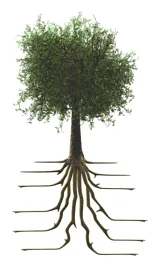Even in a straightforward condemnation case, keeping up with all the moving parts can be overwhelming. Perhaps because of this, Wisconsin has published multiple brochures on “The Rights of Landowners under Wisconsin Eminent Domain Law” to help landowners understand the process. A case from the Supreme Court of Wyoming highlights what can go wrong. Bush Land Dev. Co. v. Crook Cty. Weed & Pest Control Dist., 2017 WY 12, 388 P.3d 536 (Wyo. 2017).
Victoria Bush owned property along the Belle Fourche River. In June 2013, the Crook County Weed and Pest Control District (“District”) offered to apply herbicides to control leafy spurge found on trees on Bush’s property. Bush accepted. But after the spraying, Bush noticed that the trees in the spray-zone were dying. A Wyoming Department of Agriculture investigation found that the herbicide “applications were not in compliance with the herbicide labels” and the District’s application and spraying “outside of appropriate/approved areas” were to blame.
Bush filed a notice of claim with the District. Ten days later, Bush filed an inverse condemnation lawsuit in circuit court seeking just compensation for the trees under Wyoming’s Eminent Domain Act. Under the Act, private landowners can bring inverse condemnation actions when the government takes or damages an interest in their property without formal condemnation procedures. See Wyo. Stat. Ann. § 1-26-516. Yet the circuit court concluded that damages from the District’s actions were not compensable under the Eminent Domain Act and dismissed the case.
While the circuit court’s decision focused on the Eminent Domain Act, the Wyoming Supreme Court upheld the dismissal on entirely different grounds. It held that Bunch was required to take her claim to the district board under a separate Wyoming statute. See Wyo. Stat. Ann. § 11-5-110. This statute, wrote the Supreme Court, gave Bush “a specific administrative remedy,” which Bush needed to fully exhaust before filing the inverse condemnation lawsuit. There was no evidence that Bush specifically pursued that remedy. As such, the Wyoming Supreme Court held dismissal was appropriate.
More than three years after losing her trees, a procedural misstep meant Bush’s just compensation claim was dismissed. This case serves as a stark reminder of how important it is for landowners to get counsel involved early in the process to make sure they clear each of these hurdles.




 />i
/>i

